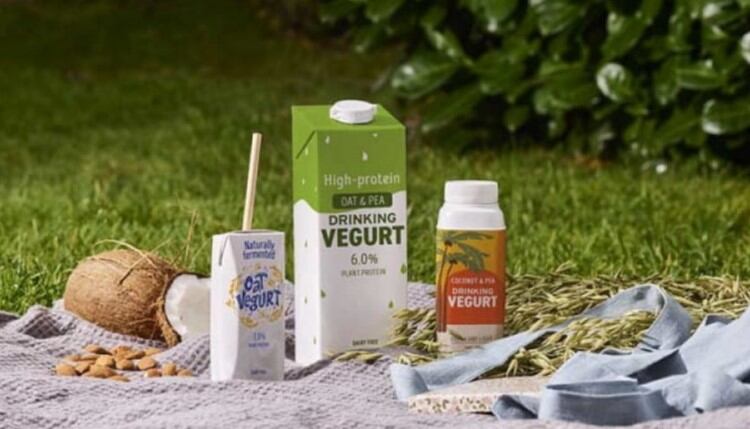Chr. Hansen has partnered with CP Kelco to unveil a new type of plant-based yogurt alternative that doesn’t require refrigeration. The so-called vegurts form part of the ambient dairy alternatives category – a segment that has been popular in Asian countries such as China but less well-known in Europe and North America.
Ambient yogurt – otherwise known as yogurt-based products for ambient distribution – is touted as nutritious alternative to refrigerated dairy or plant-based yogurt but one that doesn’t depend on the cold chain. Key benefits include ease of storage and transportation and reduction of food waste, but the trade-offs include heat treatment requirement that can denaturate milk proteins, and the oft-required addition of preservatives.
“Ambient products offer significant advantages in terms of sustainability, cost, flexibility in channel strategy including e-commerce, and market reach where cold chain distribution is not developed,” Christian Gilleladen, principal application scientist at Chr. Hansen, told DairyReporter.
The two companies have collaborated on plant-based formulations, which have presented their own set of challenges. According to Gilleladen, the plant-based dairy alternatives are already produced using so-called ambient processing, allowing the products to be sold in either ambient or chilled shelves in retail. “There are a number of producers already selling ambient plant-based yogurt alternatives, although most producers of vegurts have launched in the chilled shelves to date and with low / no proteins and less nutritional,” he explained.
The category has also raised eyebrows among some consumers, with Chr. Hansen and CP Kelco noting that one barrier to a wider global adoption is the perception of ‘naturalness’.
“For consumers, the biggest barrier to regular consumption of vegurts is currently relatively poor taste and mouthfeel compared to dairy equivalents,” added Gilleladen. “The ambient products the collaboration had developed taste great across a range of bases and textures, and offer the convenience of consumption at home or on-the-go.”
So what were some of the challenges that the companies faced during their R&D? “Challenges arise initially because the molecular structure and functionality of plant proteins are different than dairy protein,” continued Gilleladen.
“The plant bases themselves are also unique: working with oat is different than coconut or almond. Additionally, most dairy alternatives are fortified with extra protein, calcium and vitamins, which require help to ensure they all stay evenly suspended. Then, there is the recipe, which requires help ensuring protein stabilization to prevent aggregation over time in an acidic system and going through the heat treatment.
“We want to ensure stability over the shelf life and also deliver the right mouthfeel.” – Christian Gilleladen, Chr. Hansen
“One of the main challenges is developing cultures that can robustly ferment the plant bases and remove the strong vegetal flavor notes while developing fresh fermentation flavors. And another significant challenge is to find the right stabilizer systems to ensure smooth and stable texture at the required level through the high shear processing required and throughout shelf life at ambient temperature. One issue we also see in some legume plant bases is a high level of potentially harmful bacteria such as Bacillus spores, where ambient processes can help to ensure food safety.”
Critical to getting that flavor of fermented, dairy-like product is the balance of sweetness and acidity – and choosing the right culture to match the recipes has a major role to play, according to Gilleladen. “The range of cultures developed for Chr. Hansen's Vega Culture Kit can produce mild through to more intense acidity, allowing the fermentation flavor to be optimally balanced,” he added.
From vegan to hybrid
While the prototypes released by Chr. Hansen and CP Kelco are vegan, other formulations, including hybrid dairy, are possible. “These products are indeed vegan-friendly, although there is nothing stopping the formulation being produced as a hybrid if customers want that,” confirmed Gilleladen. “By choosing the right stabilizer combination, the formulation could be made without the need to label additives, but this is largely dependent on the base formulation chosen.”
The result of the collaboration includes industrially validated prototypes of drinkable and spoonable 'vegurts' with either oat, soy, pea, coconut or almond bases.

